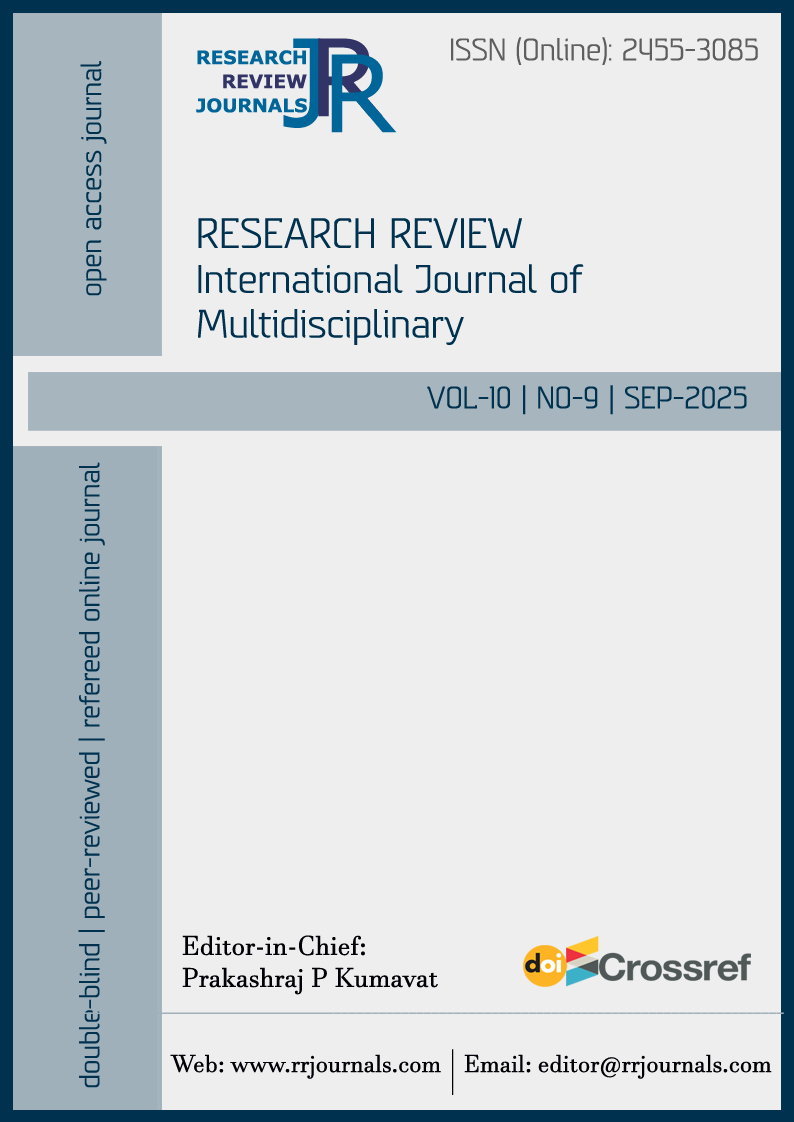Digital Competence among the Students of Higher Education in Sikkim
DOI:
https://doi.org/10.31305/rrijm.2025.v10.n9.004Keywords:
Digital Competence, Higher Education, Technology Integration, Information Literacy, Digital ExperienceAbstract
Digital transformation and innovation are reorganising the method of teaching and learning by endorsing various platforms, integrating information and technology to disseminate knowledge, and advancing digital education. Various education commissions suggest incorporating technology into the teaching and learning process. Therefore, it has become necessary to measure digital competence among students studying in higher education to understand their proficiency with technology so that appropriate curricula and programs for digital literacy can be created based on the proficiency. Various studies have revealed the differences in digital competence across various socio-demographic variables. This quantitative study analyses digital competence levels among higher education students in the Gangtok district, Sikkim, based on different social-demographic characteristics. The study used the Digital Competence Scale (SDiCoS) developed by Tzafilkou et al. (2022) for measuring the digital competence of the students. A sample of 100 students at higher education level from diverse age groups, gender, academic streams, educational levels, and locale was selected through the quota sampling technique. The results of the study demonstrated that while students’ overall levels of digital competency were reasonably high, there is a notable disparity in digital competency between male and female students, as well as between students from various academic backgrounds.
References
Ally, M., & Wark, N. (2019). Learning for Sustainable Development in the Fourth Industrial Revolution. http://hdl.handle.net/11599/3393
Bachmann, R., & Hertweck, F. (2025). The gender gap in digital literacy: A cohort analysis for Germany. Applied Economics Letters, 32(5), 608–613. https://doi.org/10.1080/13504851.2023.2277685
Central Board of Secondary Education. (2019). Artificial Intelligence Integration across Subjects. Central Board of Secondary Education. https://www.cbse.gov.in/cbsenew/list-of-manuals/AI_Integration_Manual.pdf
Creswell, J. W. (2012). In Educational Research: Planning, conducting and evaluating Quantitative and qualitative research (4th ed.). Pearson.
Divya, P., & Haneefa, M. (2018). Digital Reading Competency of Students: A Study in Universities in Kerala. DESIDOC Journal of Library and Information Technology, 38, 88–94. https://doi.org/10.14429/djlit.38.2.12233
Gall, M. D., Gall, J. P., & Borg, W. R. (2007). Educational research: An introduction (8. ed., Pearson international. ed). Pearson.
Koyuncuoglu, D. (2022). Analysis of Digital and Technological Competencies of University Students. International Journal of Education in Mathematics, Science and Technology, 10(4), Article 4. https://doi.org/10.46328/ijemst.2583
Litiņa, S., & Miltuze, A. (2023). Factors influencing Digital Competence of Higher Education Students: A Scoping Review. Human, Technologies and Quality of Education, 2023, 463–479. https://doi.org/10.22364/htqe.2023.36
Makridakis, S. (2017). The forthcoming Artificial Intelligence (AI) revolution: Its impact on society and firms. Futures, 90, 46–60. https://doi.org/10.1016/j.futures.2017.03.006
Marrero-Sánchez, O., & Vergara-Romero, A. (2023). Digital competence of the university student. A systematic and bibliographic update. Revista Amazonia Investiga, 12, 9–18. https://doi.org/10.34069/AI/2023.67.07.1
Ministry of Education. (2021). India Report- Digital Education. Digital Education Division Department of School Education & Literacy Ministry of Education, Government of India. https://www.education.gov.in/sites/upload_files/mhrd/files/irde_21.pdf
Ministry of Human Resource Development. (2020). National Education Policy 2020 Ministry of Human Resource Development Government of India. https://www.education.gov.in/sites/upload_files/mhrd/files/NEP_Final_English_0.pdf
Saienko, V., Kurysh, N., & Siliutina, I. (2022). Digital Competence of Higher Education Applicants: New Opportunities and Challenges for Future Education. Futurity Education, 2(1), Article 1. https://doi.org/10.57125/FED/2022.10.11.23
Silva‑Quiroz, J., & Morales‑Morgado, E. M. (2022). Assessing digital competence and its relationship with the socioeconomic level of Chilean university students. International Journal of Educational Technology in Higher Education. https://doi.org/10.1186/s41239‑022‑00346‑6
Sunny, S. K., & Ramasamy, K. (2024). Digital literacy skills of students of Sacred Heart College, Chalakudy: An empirical study. Journal of Applied Research in Higher Education, ahead-of-print(ahead-of-print). https://doi.org/10.1108/JARHE-06-2023-0257
Tzafilkou, K., Perifanou, M., & Economides, A. A. (2022). Development and validation of students’ digital competence scale (SDiCoS). International Journal of Educational Technology in Higher Education, 19(1), 30. https://doi.org/10.1186/s41239-022-00330-0
Curriculum Reform Division. (2018, June). Digital Competence Framework Guidance - HWB. https://hwb.gov.wales/storage/337437b8-cfe3-4305-ae32-f47ad82f3e76/digital-competence-framework-guidance-2018.pdf
Zhao, Y., Sánchez Gómez, M. C., Pinto Llorente, A. M., & Zhao, L. (2021). Digital Competence in Higher Education: Students’ Perception and Personal Factors. Sustainability, 13(21), Article 21. https://doi.org/10.3390/su132112184
Downloads
Published
How to Cite
Issue
Section
License

This work is licensed under a Creative Commons Attribution-NonCommercial 4.0 International License.
This is an open access article under the CC BY-NC-ND license Creative Commons Attribution-Noncommercial 4.0 International (CC BY-NC 4.0).



